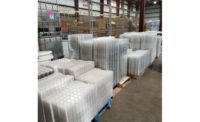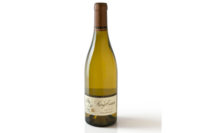TricorBraun WinePak Zero Waste Program costs zero
In first year, company recycles more than 1000 tons of waste

TricorBraun WinePak(www.tricorbraunwinepak.com) has launched a successful zero-waste program which has incurred no expense and has redirected 1020.91 tons of waste to recyclers, according to Jad Darsey, TricorBraun’s director of sustainability and plastics.
TricorBraun WinePak is a $120 million division of TricorBraun that specifically services the wine industry. It is the largest supplier of wine packaging in North America.
In March 2012, the company launched a four point program to systematically eliminate waste. The four points were based on its four streams: corrugated, plastic, pallets and waste glass. The strategy is to match the right recycler with the company’s needs. The program was headed by Ernesto Olivares, TricorBraun WinePak’s distribution manager.
A solid market for waste-corrugated exists, and Olivares identified a recycler with that area of specialization. The recycler provided a bailer and hauling at no cost in trade for the company’s waste-corrugated. Darsey reports during the first year of the program 429.94 tons of waste-corrugated were recycled.
Waste plastics— including pallet wrap, plastic strapping and PET— are placed in totes that are provided without charge by a recycler and are strategically placed around the distribution center. This alliance between the company and its recycler kept 17.51 tons of waste out of landfills, according to Darsey.
Waste glass is a valuable commodity. Between 95% and 98% of the company’s broken glass is recycled. TricorBraun WinePak has provided glass manufacturers with 573.46 tons of broken glass destined to become new bottles and jars.
The biggest challenge was recycling low impact shipping pallets utilized by some suppliers. Unlike traditional pallets, which are made from hardwoods and are readily recyclable, these pallets are made from pressboard and plywood. They are not typically recyclable. However, Olivares struck a deal with a local company that collects these types of products and resells them as a fuel source to the operator of a California incinerator. “Since the program’s inception, 2119 pallets that would have been destined for the landfill provide energy back to the California market place,” Darsey says.
Olivares emphasizes, “Your staff has to believe in the program. A busy or tired employee may need to take a couple of extra steps to recycle an item and it needs to be done properly every time.”
Looking for a reprint of this article?
From high-res PDFs to custom plaques, order your copy today!







